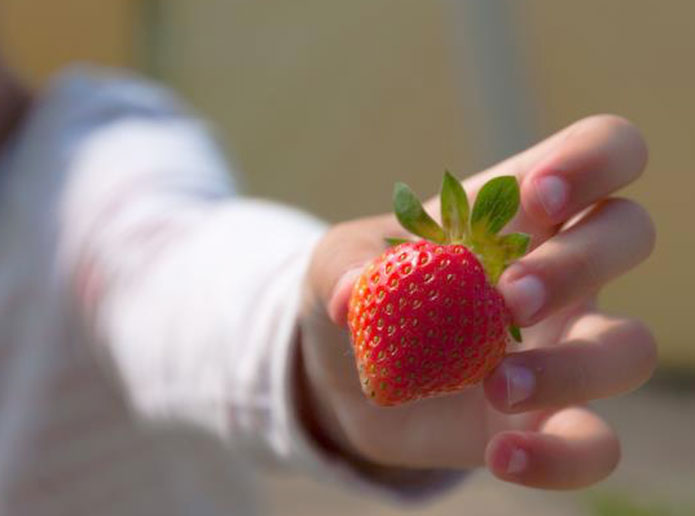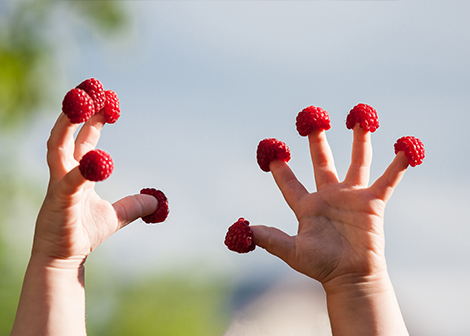Introducing your child to healthy food is a journey of learning together. It is not just about getting the food from spoon to tummy. Think about how you can set the environment so you and your child can make the most of this time.
Don’t worry about the possible mess. Have picnics outside, let children get food on their face, and don’t wipe excessively. Let other family members know it is okay for your toddler to pick food up with fingers – there is plenty of time for table manners later!
Food is fun!
Your child can also learn a lot about food and eating by watching what you do at mealtimes. For example, enjoying a pleasant and happy mealtime with the family promotes a positive attitude to eating. Eating with the rest of the family also helps younger children learn to eat the same healthy food and try new foods, like everyone else.
Toddlers need a wide variety of healthy foods. Suggested daily serves are: ½-1 serve of fruit; 2-3 serves of vegetables; 1-1½ serves of dairy; 4 serves of grains; and 1 serve of protein (lean meats, eggs, and legumes).
You decide what your child eats from the five food groups. Your child decides whether to eat and how much.
Your toddler’s appetite
We sometimes have unrealistic ideas about how much a toddler should eat. Toddlers have small tummies and appetites. They need small, regular meals and snacks. Three small meals and two or three healthy snacks per day are enough for most toddlers.
At this age, toddler appetites vary from day to day. Think about what your toddler eats across a week, rather than daily. Remember that toddlers seem to eat less because they eat small amounts frequently to meet their energy needs.
Children grow less in the second year of life. In the first 12 months, babies grow very fast. As toddlers aren’t growing as quickly, their appetite often drops.
This is normal and does not mean your child is being difficult or is unwell – they just aren’t as hungry because they aren’t growing as quickly!
Children are good at knowing when they are hungry and when they are full. They can easily lose this skill if they are pushed to eat more than they want to or are forced to finish everything on their plate.
Don’t forget that water is the cheapest and the best drink with meals. Refer to the NHMRC Healthy Eating Guide).
What you can do
- Offer small serves. Let them ask for more.
- Remove any uneaten food without commenting. Assume that your toddler has had enough to eat.
- Try to ignore fads, be patient and continue to offer a variety of foods. Many toddlers have times when they only want to eat particular foods – this is normal and won’t last forever.
- Avoid using food rewards, bribes and punishment – these teach a child to dislike certain foods and to use food as a means of control.
- The less fuss you make about food the better.
Dental care
Don’t forget to care for their teeth. Tooth decay is common in toddlers who suck on or fall asleep with bottles of milk, cordial or juice.
To prevent tooth decay:
- Wean your toddler from the bottle if they are still using one. Encourage your toddler to drink from a cup.
- Give your child tap water to drink. Tap water contains fluoride, which helps to protect teeth from decay.
- As soon as teeth appear, clean them with a soft cloth or small soft brush.
- From 18 months you can start to use a small amount of low fluoride or children’s toothpaste to brush your child’s teeth.
Want to know more?
The Raising Children Network – Nutrition and fitness articles
Nutrition Australia – Children nutrition
Healthy Kids Association – Food and nutrition






